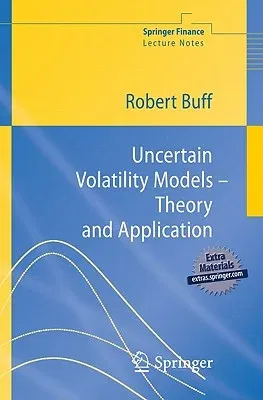Robert Buff
(Author)Uncertain Volatility Models: Theory and Application (Softcover Reprint of the Original 1st 2002)Paperback - Softcover Reprint of the Original 1st 2002, 10 April 2002

Qty
1
Turbo
Ships in 2 - 3 days
In Stock
Free Delivery
Cash on Delivery
15 Days
Free Returns
Secure Checkout
Part of Series
Springer Finance
Part of Series
Springer Finance Lecture Notes
Print Length
244 pages
Language
English
Publisher
Springer
Date Published
10 Apr 2002
ISBN-10
3540426574
ISBN-13
9783540426578
Description
Product Details
Author:
Book Edition:
Softcover Reprint of the Original 1st 2002
Book Format:
Paperback
Country of Origin:
DE
Date Published:
10 April 2002
Dimensions:
23.52 x
15.6 x
1.55 cm
ISBN-10:
3540426574
ISBN-13:
9783540426578
Language:
English
Location:
Berlin, Heidelberg
Pages:
244
Publisher:
Weight:
408.23 gm

